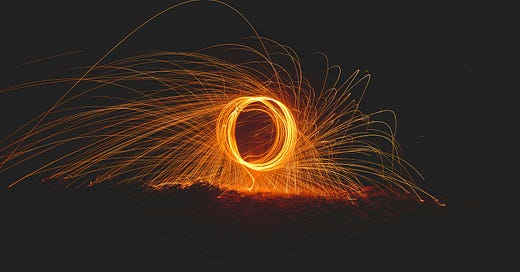
Nuclear power is incredible. Despite what you might think, it is incredibly safe, statistically one of the safest forms of energy we have, whilst also having a lower carbon footprint than most renewable energy sources, but without any of the supply and demand issues. However, it isn’t perfect. There are legitimate worries about dealing with the vast amount of nuclear waste it produces, limiting nuclear weapon proliferation, and even the geopolitical issues surrounding nuclear fuel, such as the colonial-issue exploitation of resources and the West’s reliance on Russian nuclear fuel. But India may have just solved all of these problems with their genius Prototype Fast Breeder Reactor (PFBR), which has just received approval from the country’s atomic regulator to begin loading nuclear fuel.
This reactor is utterly unique. It uses an entirely different fuel than regular nuclear reactors, known as plutonium, can even make its own nuclear fuel, and, as such, has a wholly different reactor design. To understand the benefits this gives it, we first need to understand how it works and to do that, we also need to quickly recap how a typical nuclear reactor works.
A typical nuclear reactor uses a specific isotope of uranium, uranium 235 (U235), which makes up around 5% of the nuclear fuel in the reactor. U235 by itself isn’t particularly radioactive, but in a process known as fission, it can absorb a slow-moving neutron and transmute into U236, which is highly unstable and radioactively decays almost instantly, splitting into two smaller atoms, releasing three slow-moving neutrons and a tonne of energy. These neutrons can then go on to cause three other U235 atoms to undergo fission, creating a self-sustaining nuclear chain reaction. All a nuclear reactor does is control how many of these neutrons go on to cause fission and convert the released energy into electricity.
A fast breeder reactor goes about this process entirely differently. The PFBR uses a specific isotope of uranium, uranium 238 (U238). U238 itself isn’t radioactive or fissile, meaning it can’t undergo fission after absorbing a slow neutron. However, after absorbing a much more energetic fast neutron, it transmutes into plutonium 239 (Pu233), which is fissionable through the same slow neutron absorption process as U235. So, this reactor first requires its fuel to be irradiated to “breed” its fuel into a fissile isotope before it can produce any power. The reactor is also surrounded by a blanket of Thorium 232, which, like U238, can be transmuted into fissile material known as uranium 233 (U233) by fast neutrons. As such, this reactor actually makes more nuclear fuel than it uses.
There have been numerous small-scale efforts at unlocking this sort of technology, but India’s PFBR is the first full-scale, practically commercialised attempt. Its liquid sodium-cooled reactor has a massive 500MW output, and the excess U233 fuel it produces will be used to power India’s nuclear expansion. You see, India has no uranium reserves, but it has huge thorium reserves. As such, this reactor will enable India’s nuclear industry to be self-sufficient.
Okay, so what are the advantages of this setup?
That self-sufficiency means this reactor will have very few geopolitical issues and can drastically increase India’s energy security. It is also significantly more efficient, as a typical nuclear power plant can only use 5% of its fuel, yet not only can this reactor use all of its U238 fuel, but the U233 fuel it produces is far more efficient than U235 fuel. In fact, both U238/Pu239 and Th232/U233 fission reactions are significantly cleaner, producing less waste that is also less toxic and less radioactive for less time for each unit of energy than typical U235 reactions. As such, there is far less nuclear waste to manage, and the waste it produces is far easier to store safely. This saves a huge amount of cost and makes long-term operation far more feasible. Moreover, these reactors are practically accident-proof, as they only produce fissionable nuclear fuel at the rate it is consumed. This means the reactor naturally shuts itself off rapidly if anything happens, as the nuclear fuel just runs out in milliseconds.
Okay, so if this technology is so unique, why is the rest of the world not using it used? Well, because of the massive internal temperatures of these reactors, they are heinously expensive! As such, development has focused chiefly on improving more affordable nuclear technology. But, amazingly, the PFBR’s capital and electricity costs are comparable to other nuclear and conventional power plants. As such, it could help India adopt nuclear technology incredibly rapidly and help the country decarbonise at an insane pace, all while being brilliantly affordable. So, calling this incredible reactor game-changing is far from hyperbole.
Thanks for reading! Content like this doesn’t happen without your support. So, if you want to see more like this, don’t forget to Subscribe and help get the word out by hitting the share button below.
Sources: The Independent, Will Lockett



